Human Sports
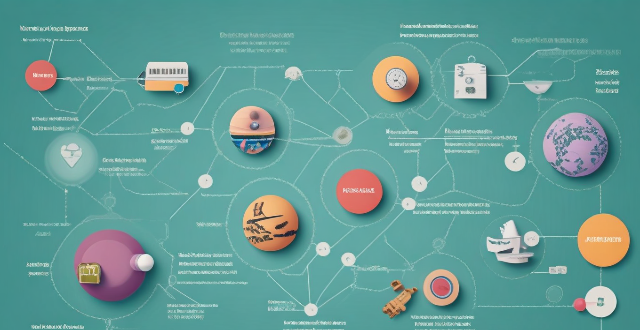
Is there a risk that AI could replace human referees or umpires in sports ?
The article discusses the potential risks and benefits of using Artificial Intelligence (AI) in sports officiating. The benefits include improved accuracy, increased efficiency, and consistency across games. However, there are also risks such as lack of human judgment, cost and accessibility, and potential for bias. It is important to address these risks and ensure that AI systems complement rather than replace human referees or umpires.

What is the relationship between sports and creativity in literature ?
In literature, sports and creativity often intertwine to enrich storytelling. Sports provide a backdrop for character development, narrative structure, and themes that mirror life's struggles. Creative writers use literary devices and unique perspectives to enhance the portrayal of sports, offering emotional connectivity with readers. Examples like "Ender's Game," "Farewell to Arms," and "Personal Best" demonstrate how sports can serve as metaphors and settings for deeper explorations of human nature and society. This intersection allows authors to craft works that resonate on multiple levels, transcending genre boundaries.

Can AI provide objective data to support or refute controversial calls in sports ?
AI can provide objective data to support or refute controversial calls in sports by analyzing vast amounts of data, capturing high-resolution images and precise measurements, processing data quickly, and making decisions based on consistent criteria. Examples of AI applications in sports include instant replay reviews, performance tracking, ball trajectory analysis, decision support systems, and bias detection and mitigation. However, challenges such as integration with current systems, human oversight, cost and accessibility, ethics and privacy must be considered to ensure responsible and effective implementation of these technologies.
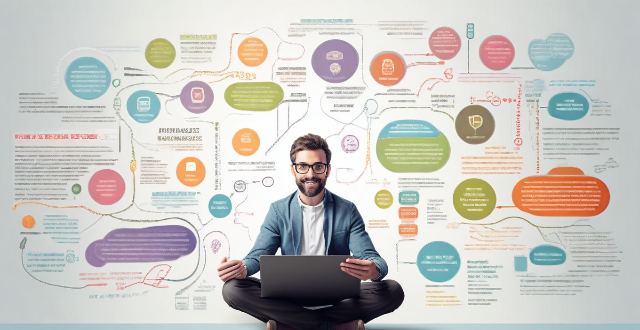
How can we ensure that climate action is consistent with human rights ?
To ensure that climate action is consistent with human rights, we need to adopt a holistic approach that takes into account the social, economic, and environmental dimensions of sustainability. Some strategies include recognizing the interdependence between climate action and human rights, integrating human rights into climate policy, ensuring transparency and accountability, promoting participatory democracy, strengthening legal frameworks, and building capacity and providing support to vulnerable populations. By doing so, we can create a more equitable and just world for all.

What are the legal frameworks for addressing climate change and human rights ?
The text discusses the various legal frameworks that exist to address climate change and human rights, including international agreements, national laws, and regional regulations. It highlights the importance of a multifaceted approach to tackle this complex issue and emphasizes the need to protect vulnerable communities' rights in the process. The text also provides examples of specific initiatives taken by different entities such as the United Nations, the United States, the European Union, the African Union, and the Association of Southeast Asian Nations. Overall, the text suggests that by working together at these different levels, we can create a more equitable and sustainable future for all.

Can climate change be considered a human rights issue ?
The text discusses the impact of climate change on human rights, focusing on health and safety, access to resources, displacement and migration, and intersectionality. It argues that climate change can be considered a human rights issue because it has the potential to violate several fundamental rights enshrined in international law. The text concludes that addressing climate change is crucial for protecting and promoting human rights globally.

Can AI replace human decision-making in complex situations ?
Artificial intelligence (AI) has made significant strides in recent years, leading to discussions about its potential to replace human decision-making in complex situations. While AI possesses certain advantages, such as speed and accuracy, it still faces limitations that prevent it from fully replacing humans in decision-making processes. Advantages of AI in decision-making include speed and efficiency, accuracy and consistency, and scalability. However, AI also has limitations such as lack of creativity, ethical considerations, and interpretability. Examples of complex situations where AI may not replace human decision-making include medical diagnosis, legal judgments, and business strategy. In conclusion, while AI has the potential to assist humans in decision-making processes, it cannot fully replace them in complex situations. The combination of AI's analytical capabilities and human creativity, ethics, and intuition will likely lead to better outcomes in these scenarios.

Is the greenhouse effect a natural phenomenon or human-induced ?
The greenhouse effect is a natural process that helps maintain Earth's climate, but human activities have significantly increased greenhouse gas concentrations, leading to an enhanced or "human-induced" effect. This has resulted in global warming and other environmental issues, such as rising sea levels, extreme weather events, and ocean acidification.

What are the responsibilities of governments in addressing climate change and protecting human rights ?
Governments worldwide have a crucial role in addressing climate change and protecting human rights. Their responsibilities include legislation, public awareness, research, international cooperation, adaptation measures, protection of human rights, alignment with Sustainable Development Goals, and monitoring progress. By taking proactive steps in these areas, governments can create a sustainable future for all citizens while respecting their fundamental rights.

How might global warming influence future patterns of human migration ?
Global warming is poised to significantly influence future patterns of human migration through various channels, including sea level rise, changes in agricultural zones, extreme weather events, economic impacts, health considerations, and social and political factors. These changes will contribute to shifts in where and how humans choose to live, forcing coastal communities to relocate, increasing the risk of flooding in currently habitable areas, movement away from regions that become too hot or dry for farming, shifts toward more favorable climates for growing crops, increased frequency and intensity of extreme weather events, decline in traditional industries like fishing or agriculture in certain regions due to changing conditions, growth in new industries related to renewable energy or climate adaptation in other areas attracting workers, spread of diseases like malaria and dengue fever to new regions as the organisms that carry them move into warmer areas making some areas less hospitable for human habitation due to heat-related illnesses becoming more common, conflicts over resources like water and arable land which may be exacerbated by climate change, and government policies on resettlement and climate adaptation measures that could either facilitate or hinder migration.

Is climate variability increasing due to human activities, such as greenhouse gas emissions ?
The text discusses the topic of whether climate variability is increasing due to human activities, especially greenhouse gas emissions. It explains that climate variability refers to the range of weather conditions in a region and that natural factors can influence it. However, the focus is on the role of human activities, such as burning fossil fuels for energy, deforestation, and industrial processes, which have led to a significant increase in greenhouse gas emissions. These emissions trap heat in the Earth's atmosphere, causing a warming effect known as the greenhouse effect. The text then explains that the increase in greenhouse gas concentrations has several effects on climate variability, including changes in temperature, precipitation patterns, sea level rise, and extreme weather events. It also mentions that there is a scientific consensus that human activities are the primary driver of recent climate change. In conclusion, the text states that climate variability is indeed increasing due to human activities, particularly greenhouse gas emissions, and that global efforts to reduce these emissions and mitigate the impacts of climate change are crucial.

How accurate is sports technology analysis ?
Sports technology analysis has become increasingly popular in recent years, with the development of advanced technologies such as sensors, wearable devices, and machine learning algorithms. These technologies are used to collect and analyze data from athletes' performance during training and competitions, providing valuable insights into their physical condition, technique, and strategy. However, the accuracy of sports technology analysis is a topic of debate among experts. In this article, we will explore the factors that affect the accuracy of sports technology analysis and discuss its limitations.

How can we balance economic development with climate action and human rights protection ?
Balancing economic development with climate action and human rights protection requires prioritizing sustainable development, integrating climate action into economic planning, protecting human rights, and collaborating across sectors. Governments and businesses should adopt policies and practices that promote renewable energy sources, reduce greenhouse gas emissions, encourage investment in green technologies, support small-scale farmers, promote fair trade practices, develop national climate plans, invest in research and development of new technologies, provide incentives for eco-friendly behaviors, ensure equal access to education, healthcare, and other basic services, protect the rights of marginalized communities, promote gender equality, enforce laws that protect workers' rights, establish cross-sectoral partnerships, encourage dialogue and consultation between stakeholders, support local initiatives, and encourage international cooperation.
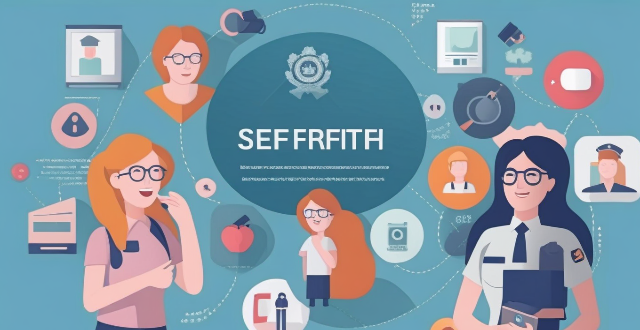
How effective are current policies in preventing human trafficking, especially affecting women and girls ?
This text discusses the effectiveness of current policies in preventing human trafficking, focusing on international cooperation, legal measures, public awareness campaigns, protection and support services, economic development initiatives, and technology and innovation. It highlights that while these policies have made strides in raising awareness and strengthening legal frameworks against human trafficking, particularly affecting women and girls, there is still much work to be done. The complexity of the issue demands a multifaceted approach that combines law enforcement with social services, international cooperation with grassroots action, and traditional methods with innovative solutions. Continuous evaluation and adaptation of these policies are necessary to ensure they remain effective in protecting vulnerable populations from this grave violation of human rights.

Why is it important to address violence against women as a human rights issue ?
Violence against women is a widespread problem that violates basic human rights and has far-reaching consequences for individuals, families, communities, and society at large. Addressing violence against women as a human rights issue is essential for upholding these basic rights, promoting gender equality, breaking the cycle of poverty and marginalization, and fulfilling our legal obligations under international law. By raising awareness about this issue and working towards creating a world where all individuals can live free from fear and violence, we can help create a more equitable and just society for all.

How do scientists use climate models to study the impact of human activities on the environment ?
Climate models are mathematical tools used to simulate the Earth's climate system and study the impact of human activities on the environment. The process involves data collection, model construction, scenario analysis, prediction and projection, and continuous validation and refinement. These models help policymakers make informed decisions about reducing greenhouse gas emissions and adapting to climate change.
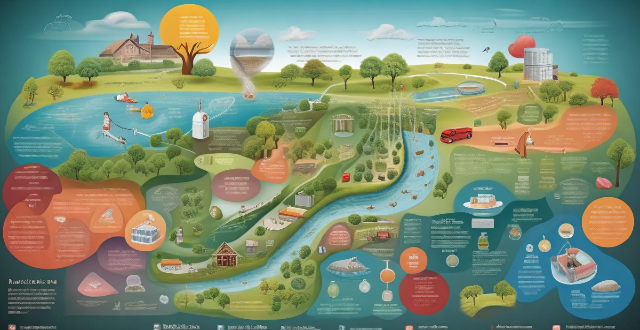
How does climate data analysis aid in understanding the impact of human activities on the environment ?
Climate data analysis aids in understanding the impact of human activities on the environment by identifying climate change indicators, analyzing atmospheric composition, monitoring land use changes, assessing water resources, and evaluating energy consumption. By collecting and analyzing various types of climate data, scientists can identify patterns and trends that help them understand how human activities are affecting the planet. This information is critical for developing strategies to mitigate the negative impacts of human activities on the environment and promote sustainable development.

How do ethical considerations factor into the use of AI in sports ?
Ethical considerations in the use of AI in sports include fairness and bias, privacy and data protection, integrity and cheating, transparency and accountability, human oversight and control, and future implications. It is important to ensure that AI algorithms are free from inherent biases, strict data protection regulations are enforced, clear guidelines are established to prevent misuse of AI technology, transparency and explainability are essential for building trust in AI applications within sports, clear lines of accountability must be established for actions taken by AI systems, human judgment should always play a role in decisions influenced by AI in sports, and thoughtful planning is required to mitigate potential negative consequences of AI on the sports industry.

In what ways do extreme weather events influence human behavior and psychological well-being ?
Extreme weather events, such as hurricanes, floods, heatwaves, and droughts, have significant impacts on human behavior and psychological well-being. These effects can be seen in various aspects of life, including physical health, mental health, social interactions, and economic stability. The physical health impacts include increased risk of injury or death, exacerbation of chronic conditions, and spread of disease. The mental health impacts include acute stress reaction, post-traumatic stress disorder (PTSD), grief and loss. The social interactions impacts include community cohesion and disruption of social networks. The economic stability impacts include financial strain and job loss and unemployment. In conclusion, extreme weather events have far-reaching impacts on human behavior and psychological well-being that extend beyond the initial incident itself. Addressing these challenges requires comprehensive strategies that consider both short-term relief efforts and long-term resilience building measures aimed at enhancing individual, community, and societal adaptive capacities.
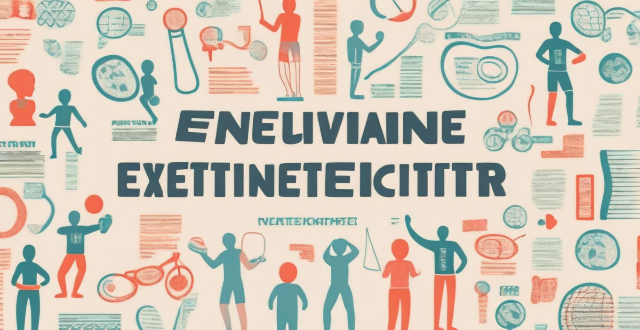
How does sports influence literary creation ?
The influence of sports on literary creation is explored in this article. Sports have provided writers with motivation and inspiration, introduced themes and characters, contributed to realism and atmosphere, and served as a vehicle for social commentary. Examples from various literary works are given to illustrate these points.

How does sports influence art expression ?
The text discusses how sports have influenced art expression throughout history and across various mediums. It outlines the impact of sports on visual arts, literature, music, dance, and fashion. The visual arts section includes sculpture, painting, photography, digital art, and motion graphics. The literature section covers sports literature, poetry, and ekphrastic poetry. The music section discusses national anthems, fight songs, pop culture, and hip hop culture. The dance and performance art section covers contemporary dance and performance art. Finally, the fashion section includes sportswear design and high-fashion collaborations. Overall, the text emphasizes the diverse and profound influence of sports on art expression.

Can sports help individuals achieve their personal goals ?
Sports have been an integral part of human civilization for centuries. They are not only a source of entertainment but also serve as a platform for personal growth and development. Many individuals engage in sports to achieve their personal goals, be it physical fitness, mental well-being, or social interaction. One of the most obvious benefits of sports is improved physical health. Engaging in regular physical activity can lead to reduced risk of chronic diseases such as heart disease, diabetes, and obesity, strengthened bones and muscles, improved cardiovascular health, and better sleep quality. Sports can also aid in weight management by burning calories and increasing metabolism, leading to weight loss or maintenance. Engaging in sports can help reduce stress levels by releasing endorphins, which are natural mood boosters. This can lead to improved mood and reduced anxiety, as well as better coping mechanisms for stressors in life. Participating in sports can also boost self-esteem by providing a sense of accomplishment and pride, leading to increased confidence in one's abilities and improved body image and self-worth. Sports often require teamwork and communication, which can help individuals develop these skills outside of the sporting arena. This can lead to improved interpersonal relationships and enhanced leadership abilities. Participating in sports can also provide networking opportunities, allowing individuals to meet new people who share similar interests. This can lead to new friendships and professional connections, as well as an expanded social circle and support system. In conclusion, sports can play a significant role in helping individuals achieve their personal goals. Whether it be physical fitness, mental well-being, or social interaction, sports offer numerous benefits that can positively impact various aspects of one's life. By engaging in sports regularly, individuals can work towards achieving their personal goals while enjoying the many benefits that come with it.

What is sports biomechanics and how does it apply to athletic performance ?
Sports biomechanics is a subdiscipline that applies mechanics principles to study human movement in sports and exercise. It focuses on how forces and motion affect the body during physical activity, combining knowledge from physics, biology, engineering, and other areas for understanding and improving athletic performance. Key concepts include kinematics, kinetics, and dynamics. Applications of sports biomechanics include injury prevention through gait analysis and movement optimization; technique improvement via motion analysis and force plates; equipment design considering ergonomics and material science; training programs that incorporate resistance, flexibility, and stability training; performance analysis using data analysis and feedback systems; and recovery strategies like physical therapy and rest-activity balance.
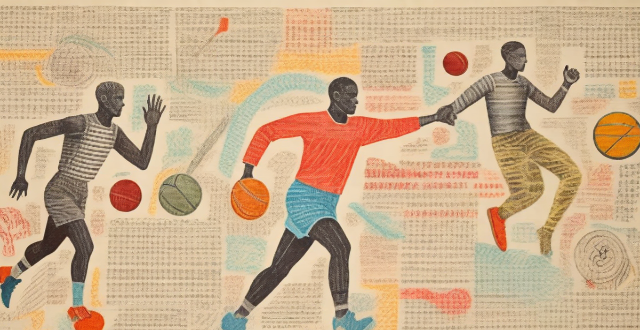
How has the relationship between sports and art evolved over time ?
The relationship between sports and art has evolved over time, reflecting societal shifts in values, technology, and cultural practices. In ancient civilizations, sports and art were often intertwined, serving both practical and aesthetic purposes. The Middle Ages saw a separation between the two due to religious influences, but by the Renaissance, there was a renewed interest in classical ideals that brought them closer again. Modern times led to specialization and convergence in areas such as advertising, while contemporary advancements in technology have allowed for unprecedented integration of sports and art through digital platforms and global spectacles.

How do the principles of sports biomechanics differ between individual and team sports ?
This text discusses the principles of sports biomechanics in individual and team sports. It highlights the differences in kinematics, kinetics, and coordination between the two types of sports. In individual sports, there is a focus on precision, technique optimization, and personal performance, while team sports emphasize strategic interactions, group coordination, and adaptability to complex game situations. The text concludes by emphasizing the importance of understanding these distinctions for coaches and athletes to tailor their training approaches to best suit the specific demands of their chosen sport.

What are the latest advancements in sports science ?
The text discusses the latest advancements in sports science, including wearable technology, nutritional science, biomechanics, and mental training. Wearable technology provides real-time data on an athlete's performance, while nutritional science focuses on specialized diets and supplements. Biomechanics studies human movement to improve form and reduce injuries, while mental training techniques help build confidence and manage stress. These advancements have revolutionized athletic performance across all levels of competition.

What are some famous works of literature that incorporate sports themes ?
Sports-themed literature has captivated readers for centuries, exploring aspects of human nature and society. Famous works include "The Natural" by Bernard Malamud, "Friday Night Lights" by H.G. Bissinger, "Ender's Game" by Orson Scott Card, "Seabiscuit: An American Legend" by Laura Hillenbrand, and "The Art of War" by Sun Tzu. These works showcase the diverse ways sports can be incorporated into storytelling, delving into complex issues such as ambition, competition, teamwork, and personal growth.

How does gender equality affect participation in competitive sports ?
Gender equality is a fundamental human right that ensures individuals are not discriminated against based on their sex. In the realm of competitive sports, gender equality can significantly influence participation rates, access to resources, and overall opportunities for athletes. This discussion will explore how gender equality affects participation in competitive sports. The importance of gender equality in sports includes equal opportunities, media coverage and representation, financial support and sponsorship, and safety and well-being. Challenges faced due to lack of gender equality include unequal participation rates, limited career opportunities, and cultural barriers. Strategies to promote gender equality in sports include policy changes, education and awareness, and supportive infrastructure development. In conclusion, gender equality plays a crucial role in determining participation rates in competitive sports. By addressing issues such as unequal opportunities, media representation, financial support, safety concerns, and cultural barriers, we can create a more inclusive environment that encourages females to engage actively in sports. Through policy changes, educational initiatives, and supportive infrastructure development, we can promote gender equality within the world of competitive sports, ensuring that talent and passion are the only determining factors for success.